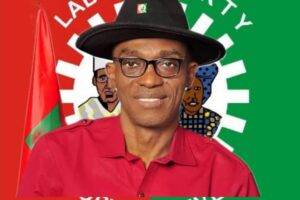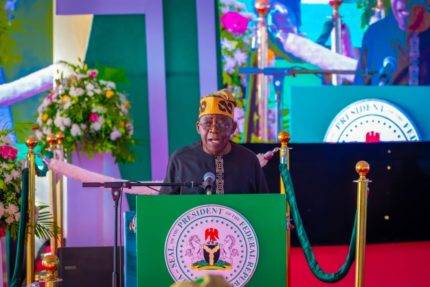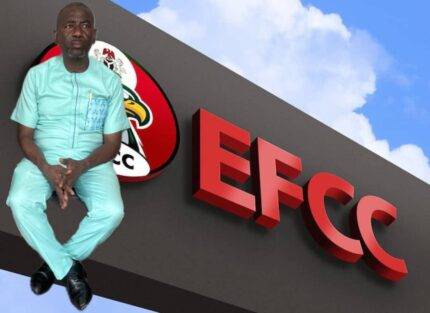President Bola Tinubu on Sunday inaugurated the newly reconstructed Apapa-Oworonshoki-Ojota-Oshodi Expressway, a critical 36.02km route that connects Nigeria’s premier ports—Apapa and Tin Can Island—to the larger expanse of Lagos State. This significant infrastructure project is expected to substantially enhance access to the ports, streamline logistics, and invigorate economic activities in the region.
During the unveiling ceremony at the Gbagada stretch, President Tinubu, represented by Senate President Godswill Akpabio, emphasized the strategic importance of the expressway. President Tinubu highlighted that the reconstruction, managed by the Federal Ministry of Works, would significantly reduce congestion and delays that have plagued the route, thereby facilitating smoother movement of goods from Apapa Wharf. The expressway’s upgrade, originally built between 1975 and 1978, was long overdue, and its revitalization marks a substantial improvement in Lagos’ transport infrastructure.
Innovative Funding and Construction Methods
The reconstruction of the Apapa-Oworonshoki-Ojota Expressway was executed in four sections using Continuously Reinforced Concrete Pavement (CRCP), ensuring durability and reduced maintenance costs. This method was implemented by Dangote Industries Limited under the tax credit scheme, with Hitech Construction Nigeria Limited serving as the subcontractor. The tax credit method of infrastructure funding has been praised for leveraging private sector efficiency and investment to deliver public goods.
This project not only signifies a triumph in modern engineering practices but also showcases the potential of public-private partnerships in addressing Nigeria’s infrastructure deficit. The adoption of CRCP technology means that the road will have a longer lifespan, better resistance to heavy traffic, and lower maintenance needs, making it a model for future road projects in Nigeria and beyond.
President Tinubu: Rehabilitation of the Third Mainland Bridge
In addition to the expressway, President Tinubu also virtually inaugurated the recently rehabilitated Third Mainland Bridge, the longest of three bridges connecting Lagos Island to the mainland, spanning approximately 11.8km. Originally commissioned by President Shehu Shagari in 1980 and completed by General Ibrahim Babangida in 1990, the bridge has been a critical artery in Lagos’ transport network.
The rehabilitation work on the Third Mainland Bridge was crucial to improving its structural integrity and extending its operational lifespan. The project aimed to address the wear and tear accumulated over decades, ensuring that the bridge remains safe and functional for the millions of commuters who rely on it daily. This effort is part of a broader initiative to enhance Nigeria’s infrastructure, with numerous projects underway across the country.
President Tinubu represented by Senate President Godswill Akpabio, speaking at the event, underscored the nationwide impact of these developments, citing ongoing works from the Presidential Villa in Asokoro to the AYA Roundabout in Abuja. These projects, some of which will be commissioned this week, reflect a concerted effort to modernize Nigeria’s infrastructure, stimulate economic growth, and improve the quality of life for its citizens.
Minister of Works Advocates for Concrete Technology in Road Construction
The Minister of Works, Engr. David Umahi, has emphasized the adoption of concrete technology in road construction, citing its long-term durability and cost-effectiveness as primary reasons for this shift. Engr. Umahi explained that the rising costs of bitumen, a key component in asphalt, have made concrete a more viable option for sustainable infrastructure development. During a recent inauguration of a newly constructed road, he highlighted the benefits of this transition, asserting, “We want our contractors to migrate to the use of concrete technology for road construction.”
The Minister also pointed out that the use of concrete technology aligns with the government’s broader infrastructure strategy, which leverages tax credits to fund such projects. He described the inauguration as a testament to the effectiveness of this financing model, which has already shown promise in improving the country’s road network. The move towards concrete roads is seen as a strategic decision aimed at enhancing the longevity and reliability of Nigeria’s transportation infrastructure.
President Tinubu Administration embarked on Comprehensive Rehabilitation of Third Mainland Bridge
In addressing the state of the Third Mainland Bridge, Engr. Umahi detailed the extensive measures taken beyond mere surface repairs. He revealed that all expansion joints had to be replaced, a crucial step that was previously overlooked in regular maintenance efforts. “We had to replace all the expansion joints, and we also noticed that over the years all the maintenance on the bridge was only for the surface, which created a lot of super elevation and potholes, increasing the dead load on the bridge and resulting in increased deflection,” the Minister noted.
Dr. Yakubu Kofarmata, Permanent Secretary of the Federal Ministry of Works, supported this by announcing President Tinubu’s directive to expedite the completion of the Abuja-Kano Road within a year. President Tinubu reassured the public that the Makurdi-Enugu Expressway is nearing completion and that other federal road projects are being actively pursued. Dr. Kofarmata credited Engr. Umahi with saving the country N1.19 trillion through renegotiations of ongoing road project costs, demonstrating the President Tinubu administration’s commitment to infrastructural development under the Renewed Hope Agenda.
Lagos State Benefits from Federal Road Projects
The positive impact of federal road projects was further highlighted by the Deputy Governor of Lagos State, Dr. Femi Hamzat. He expressed gratitude towards President Tinubu and the Ministry of Works for their efforts in refurbishing critical roads, significantly reducing travel time within the state. “About two years ago, a lot of companies on the Apapa-Oworonshoki-Ojota Road moved from this axis because of the deplorable state of the road,” Dr. Hamzat remarked, noting the drastic improvement that has since occurred.
Dr. Hamzat commended the collaborative efforts of the Ministry of Works, the Dangote Group, and Hitech Construction Limited for their role in transforming the Apapa-Oworonshoki-Ojota Road and the Third Mainland Bridge. These improvements have not only facilitated smoother and faster commutes but have also encouraged businesses to return to the area, bolstering economic activity. The reduction in travel time from seven hours to just one hour and fifteen minutes stands as a testament to the project’s success, marking a significant milestone in Lagos State’s infrastructural progress through President Tinubu led Federal government
Table of Contents
Discover more from OGM News NG
Subscribe to get the latest posts sent to your email.














